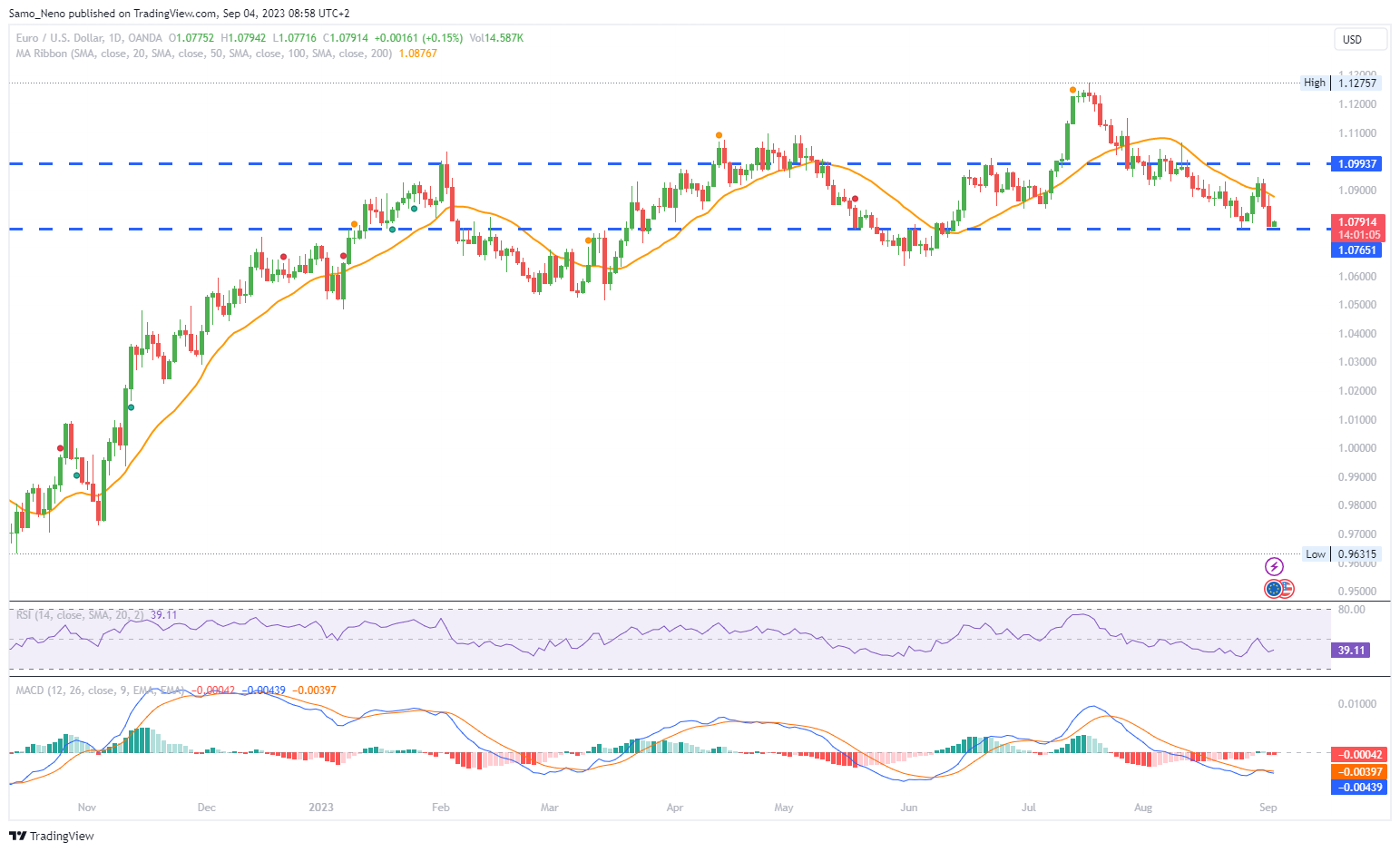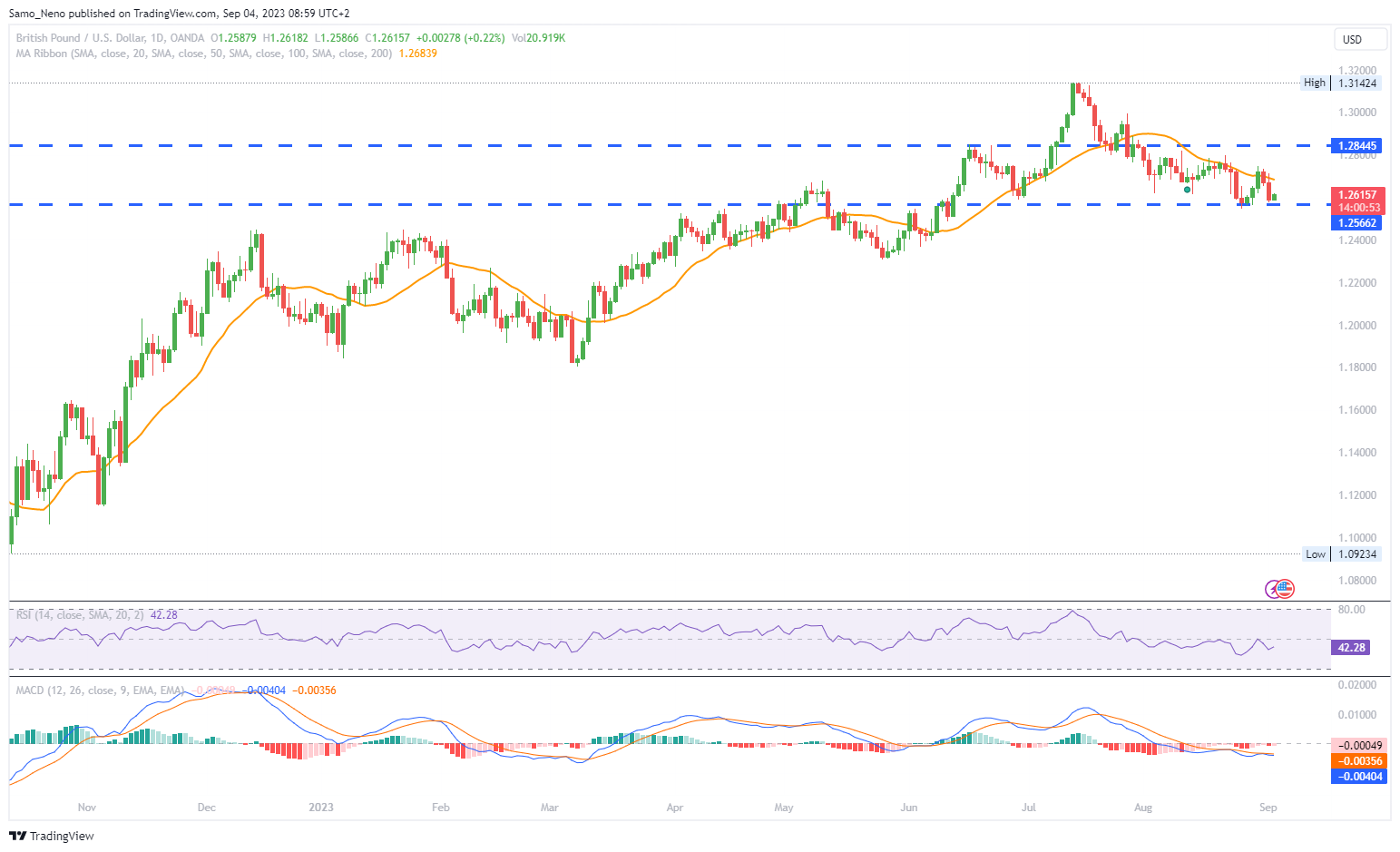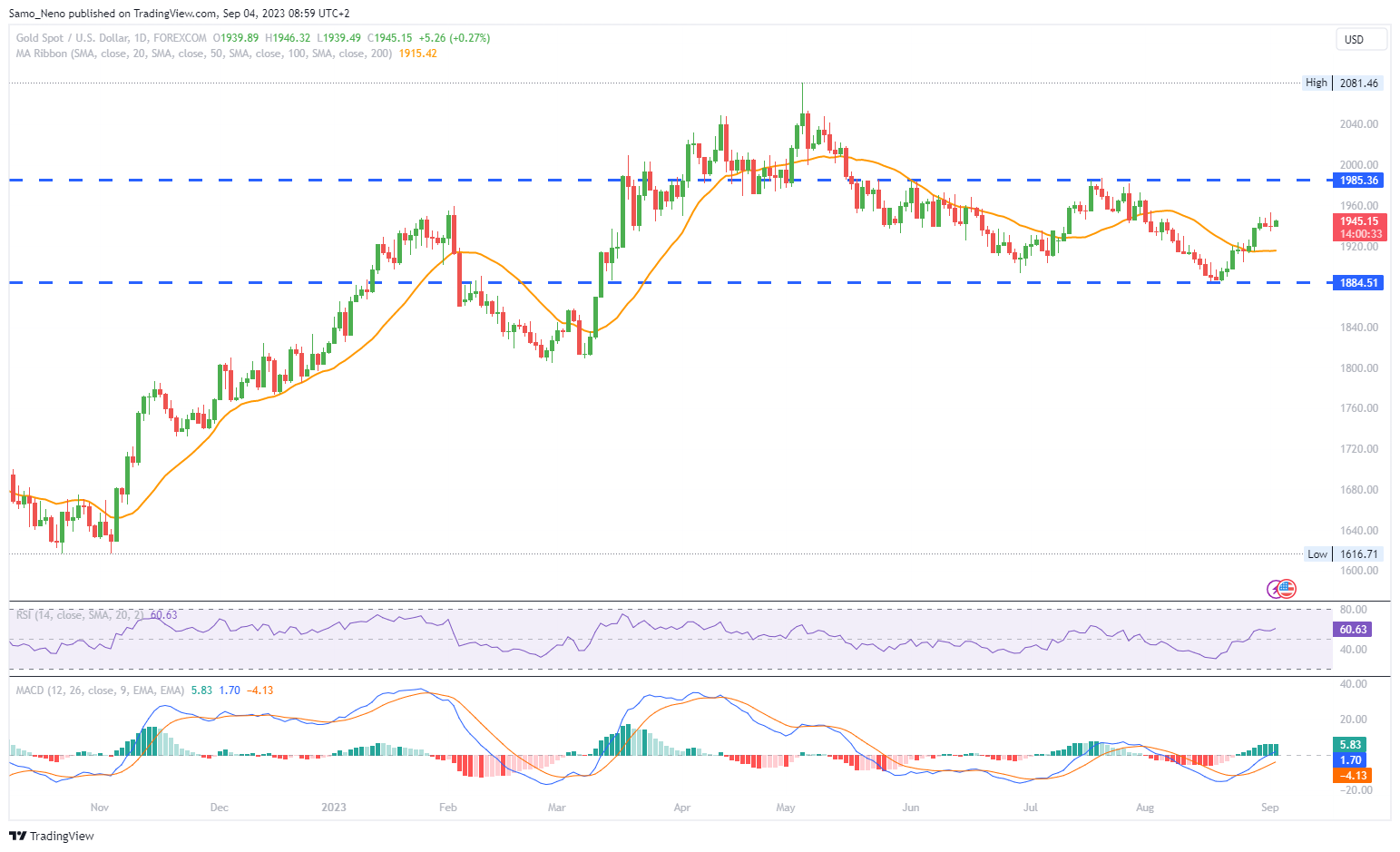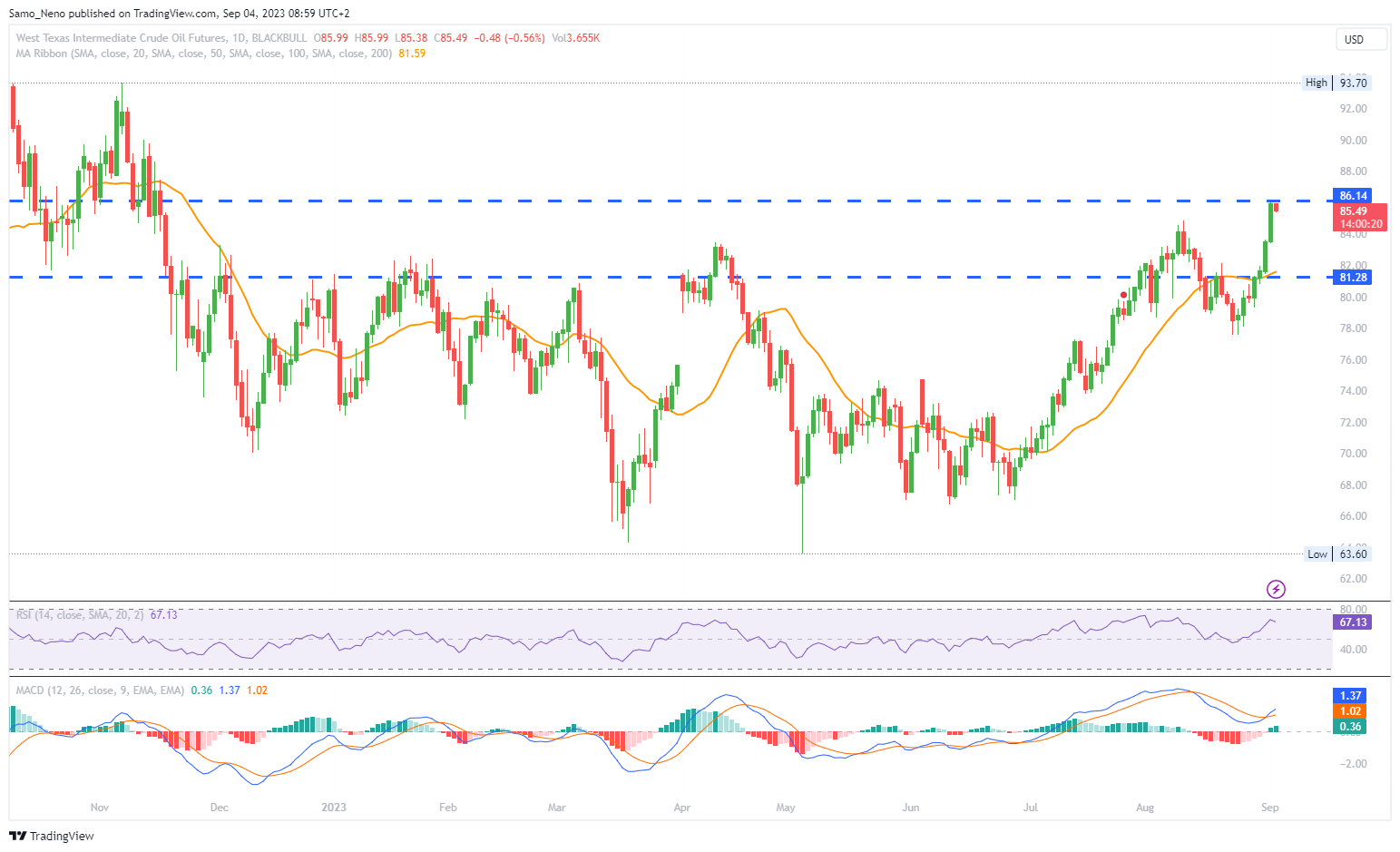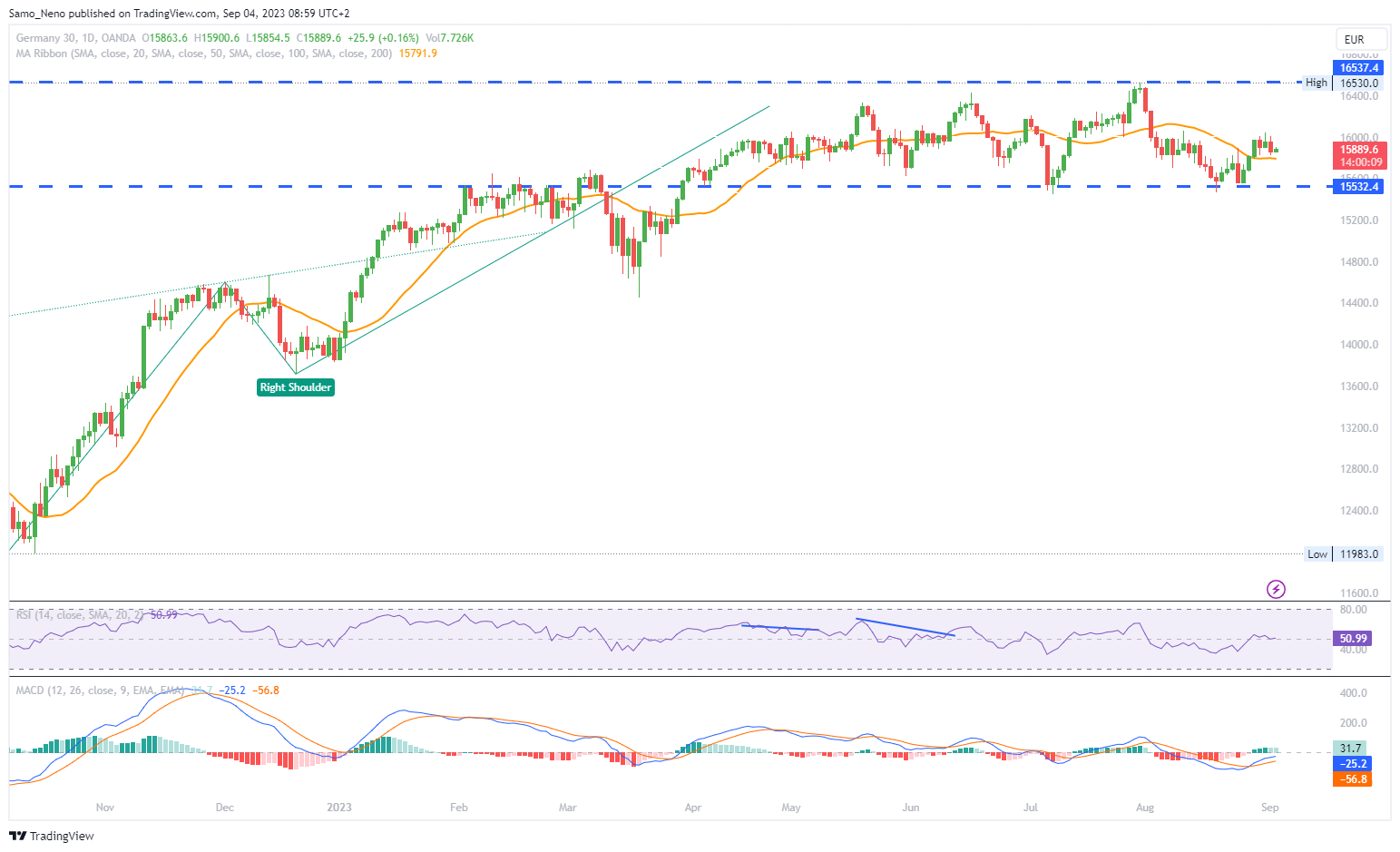EURUSD
- The EUR/USD currency pair continues to experience downward pressure, trading around the 1.0780-1.0775 range. This comes after a significant break below a key support line that dates back to March. The former support level at 1.0780 is now acting as immediate resistance.
- Investors have started to reconsider their expectations of another rate hike by the European Central Bank (ECB) in September. This shift in sentiment has weighed on the Euro's value. Belgian Central Bank Governor and ECB Governing Council member Pierre Wunsch mentioned that the ECB could potentially take further measures, creating uncertainty in the markets.
- ECB policymaker Francois Villeroy de Galhau indicated that the central bank is nearing a peak in interest rates but is not yet considering rate cuts. These mixed signals from ECB members have added to the uncertainty surrounding the Euro's future direction.
- European Central Bank (ECB) President Christine Lagarde delivered a speech that appeared to have a hawkish tone. This could potentially challenge the bearish sentiment around the EUR/USD. However, the impact of her speech remains to be seen.
- It's important to note that the US market is closed for the Labor Day holiday, which may result in reduced trading activity and volatility.
Closing statement: EUR/USD is currently facing downward pressure and struggling to regain lost ground after breaking a key support line. The currency pair's direction will depend on various factors, including ECB policies, rate hike expectations, and any further statements from ECB officials. Christine Lagarde's recent hawkish remarks may add an element of uncertainty to the pair's trajectory.
GBPUSD
- UK Finance Minister Jeremy Hunt has expressed confidence in the UK's ability to reduce inflation, stating that they are on track to halve it this year. He expects a temporary uptick in inflation for September but anticipates it to subsequently decline to around 5.0%, aligning with the Bank of England's (BoE) projections. These remarks suggest a degree of optimism regarding the UK's economic stability.
- The US NFP data for August exceeded market expectations, with 187,000 jobs added compared to an estimated 170,000. This figure marks an improvement from July's reading of 157,000, indicating continued job growth in the US. However, it's important to note that economic data from the US can have a significant impact on the GBP/USD exchange rate.
- The US Unemployment Rate experienced a notable decline, dropping to 3.8%, which was lower than the market estimate of 3.5% and the previous reading of 3.5%. A lower unemployment rate typically reflects a stronger job market.
- While the monthly Average Hourly Earnings in the US showed a 0.2% increase, slightly below the expected 0.3%, it still signifies wage growth, which is a crucial factor in assessing the health of the US economy.
- The US Manufacturing Purchasing Managers' Index (PMI) exceeded market expectations, recording a reading of 47.6, compared to the previous figure of 46.4 and the estimated 47.0. This indicates a potential improvement in the manufacturing sector.
| SMA (20) | Slightly Falling |
|
| RSI (14) | Slightly Falling |
|
| MACD (12, 26, 9) | Neutral |
Closing statement: GBP/USD analysis reflects the impact of economic data from both the UK and the US. While the UK government is optimistic about managing inflation, the strong US NFP figures, declining unemployment rate, and improved Manufacturing PMI indicate a robust US job market and economic conditions. These factors can influence the GBP/USD exchange rate, making it important for traders to monitor economic indicators from both countries.
GOLD
- Gold prices experienced a slight rise on Monday, building on gains from the previous session. This movement is partly attributed to mixed U.S. labor data, which has strengthened the expectation that the Federal Reserve will keep interest rates unchanged.
- The CME FedWatch tool suggests that the markets have priced in the likelihood of the Fed not raising interest rates in its September meeting. Additionally, the probability of rate hikes in November and December has declined to nearly 35%. This sentiment reflects expectations of a prolonged period of stable interest rates.
- Despite recording its lowest weekly gain since early July, the U.S. Dollar (USD) has maintained its positive momentum for six consecutive weeks. A strong USD can often exert downward pressure on the price of gold.
- While it's anticipated that U.S. interest rates will not rise further in the near term, they are expected to remain at elevated levels, given the persistent nature of U.S. inflation. Sticky inflation can contribute to a more extended period of higher interest rates.
- Traders are now focusing on upcoming economic indicators from China, as well as any cues regarding the U.S. economy and future rate hikes. However, it's worth noting that trading activity in metal markets might be limited on Monday due to a U.S. market holiday.
| SMA (20) | Neutral | |||
| RSI (14) | Slightly Rising |
|
||
| MACD (12, 26, 9) | Rising |
|
|
Closing statement: Gold prices are influenced by factors such as interest rate expectations, the strength of the U.S. Dollar, and economic data. While the markets currently anticipate a pause in rate hikes by the Federal Reserve, the persistence of inflation remains a significant consideration. Furthermore, economic indicators from both China and the U.S. can provide valuable insights for traders in the gold market.
CRUDE OIL
- Crude oil prices edged slightly higher on Monday, finding support in expectations that major oil producers will continue to manage supplies tightly. Additionally, growing hopes that the Federal Reserve will maintain its current interest rates to support the U.S. economy have contributed to this trend.
- Both oil contracts closed the previous week at their highest levels in over half a year, following two weeks of weakness. This indicates that crude oil prices have been exhibiting increased volatility recently.
- The primary driving force behind crude oil prices has been the anticipation of further supply cuts by major oil-producing nations, notably Russia and Saudi Arabia. These efforts to curtail supply have been instrumental in stabilizing and bolstering oil prices.
- Despite these positive factors, it's important to note that the steady increase in U.S. oil production remains a potential limitation on significant price gains. Higher production can contribute to a more balanced global oil market.
- China's manufacturing activity unexpectedly expanded in August, according to data from Caixin's manufacturing PMI survey. This positive data point has helped alleviate some pessimism regarding the economic health of the world's largest oil importer, offering support to oil prices.
| SMA (20) | Slightly Rising |
| ||
| RSI (14) | Rising |
|
|
|
| MACD (12, 26, 9) | Rising |
|
|
Closing statement: Crude oil prices are influenced by a combination of factors, including supply dynamics, global economic conditions, and the monetary policy of central banks like the Federal Reserve. While supply cuts by major oil-producing nations have recently supported prices, the steady increase in U.S. oil production presents a counterbalancing force. Additionally, economic indicators from major oil importers like China can play a role in shaping oil price movements.
DAX
- Germany's DAX index experienced losses after Friday's trading session, with declines primarily seen in the Construction, Industrials, and Retail sectors, contributing to the overall decrease in share prices.
- Germany, as one of the world's leading exporters, faced challenges in July as global demand showed signs of weakening. Data from the federal statistics office revealed a 0.9% decrease in German exports compared to the previous month. This decline was less severe than anticipated, as a Reuters poll had predicted a month-on-month decrease of -1.5%. Imports, on the other hand, increased by 1.4% in July.
- The foreign trade balance for July showed a surplus of 15.9 billion euros ($17.15 billion), down from the previous month's surplus of 18.7 billion euros. This suggests a slight contraction in Germany's trade surplus, which could impact the country's economic outlook.
- Market participants are expected to closely monitor key economic indicators, including the German Trade Balance for July, the Eurozone Sentix Investor Confidence for September, and a speech by German Buba President Joachim Nagel. These events could provide insights into the economic conditions in Germany and the broader Eurozone.
- Rising expectations of a September rate hike by the European Central Bank (ECB) have created uncertainty and pressure on the DAX. Such expectations are closely tied to the macroeconomic environment and central bank policies, making them significant drivers for equity markets.
| SMA (20) | Neutral | |
| RSI (14) | Neutral | |
| MACD (12, 26, 9) | Slightly Rising |
|
Closing statement: The DAX's recent performance reflects the challenges faced by Germany's economy, particularly in the context of global economic conditions and trade dynamics. Speculation regarding ECB rate hikes, along with macroeconomic trends, will likely continue to influence the DAX's movements in the near term.
